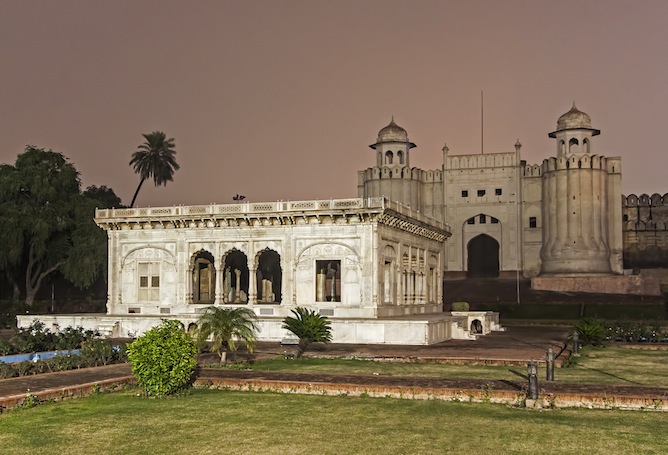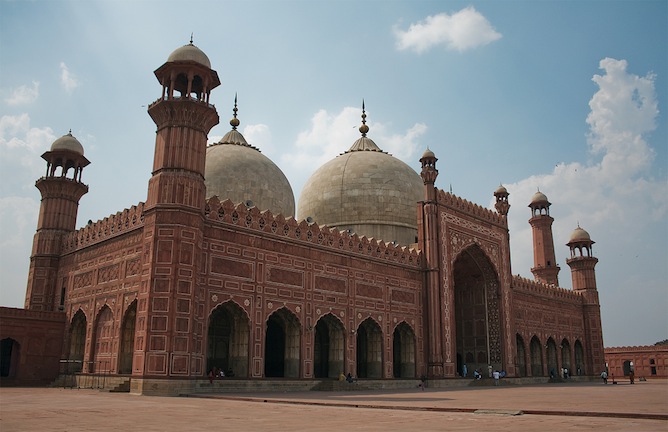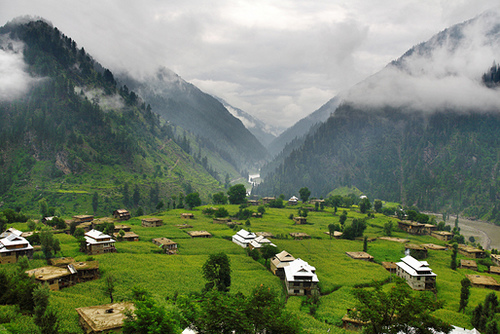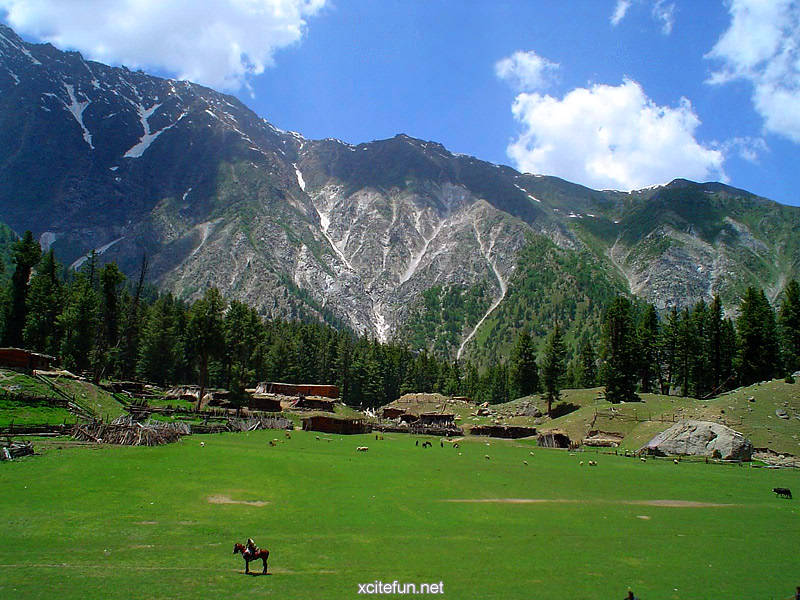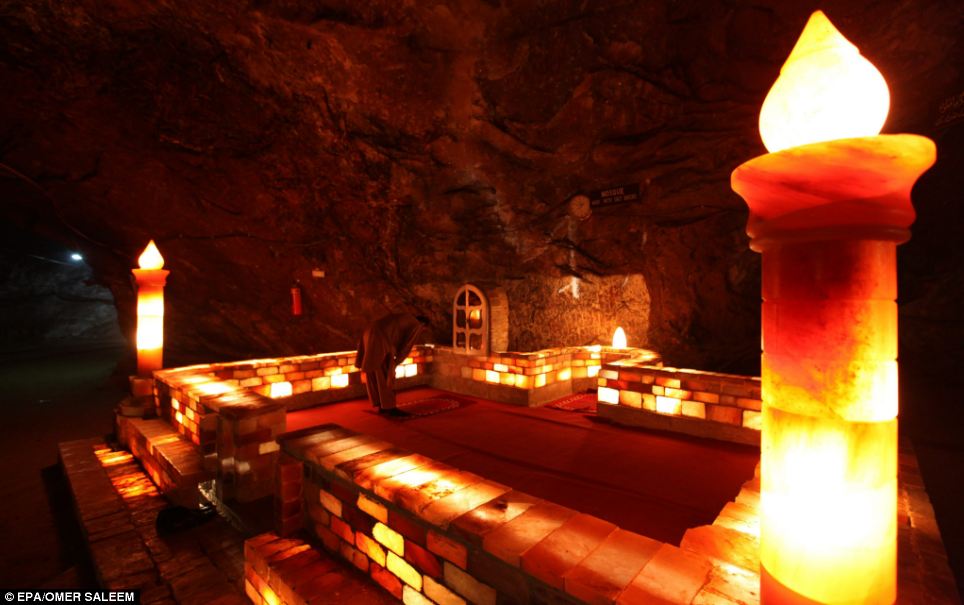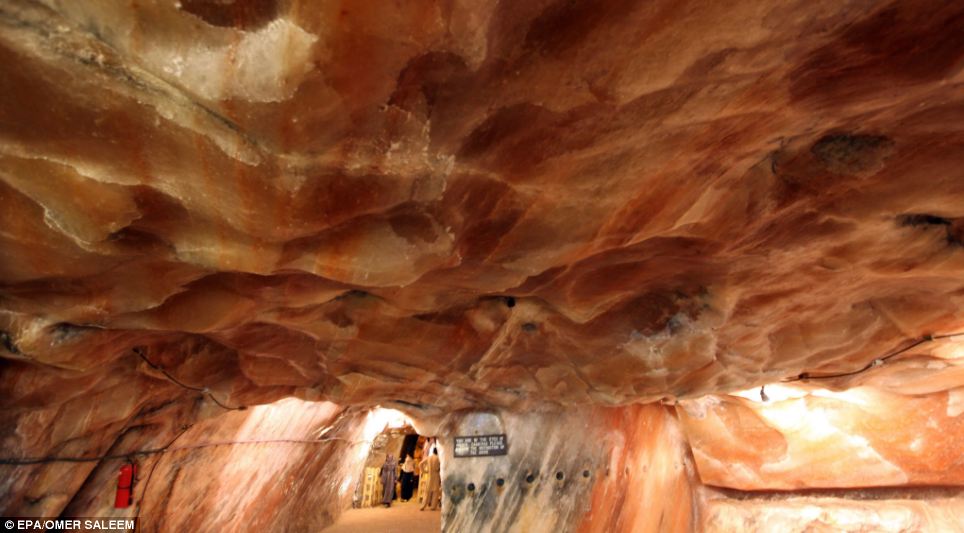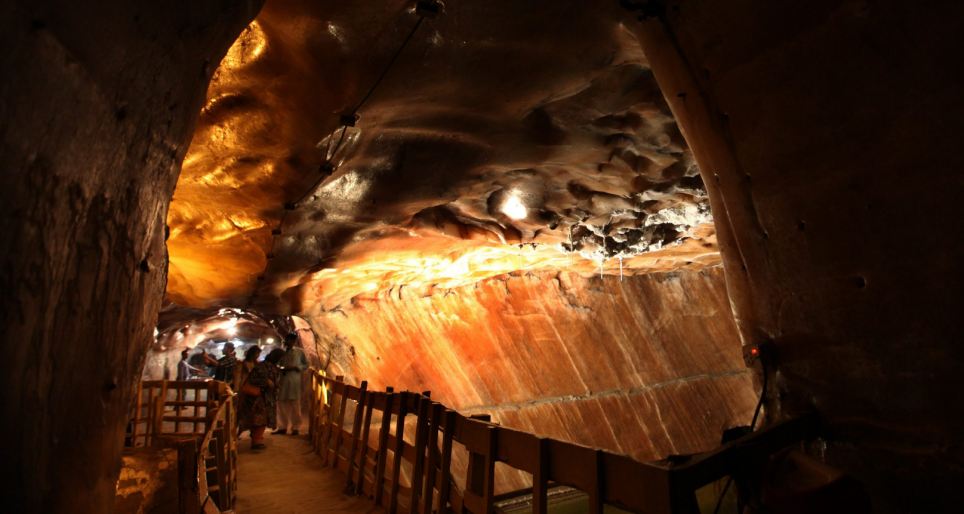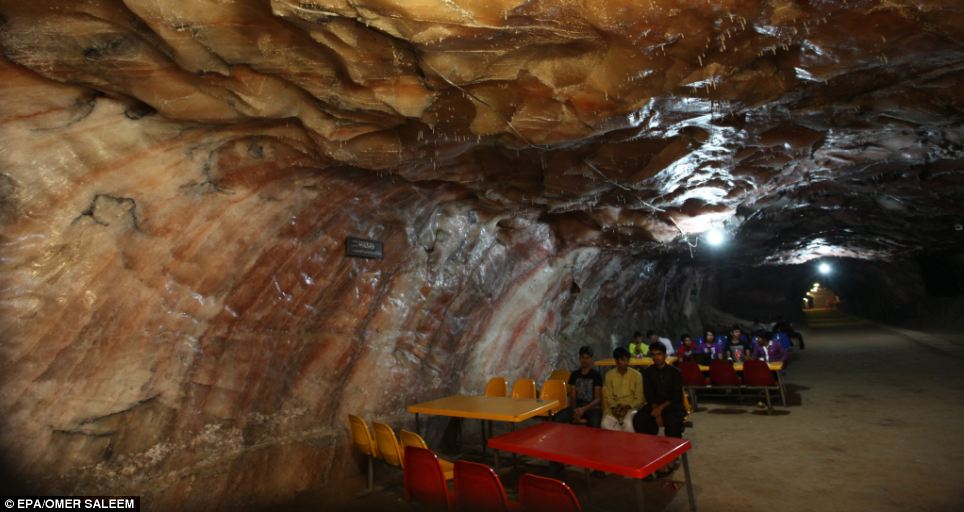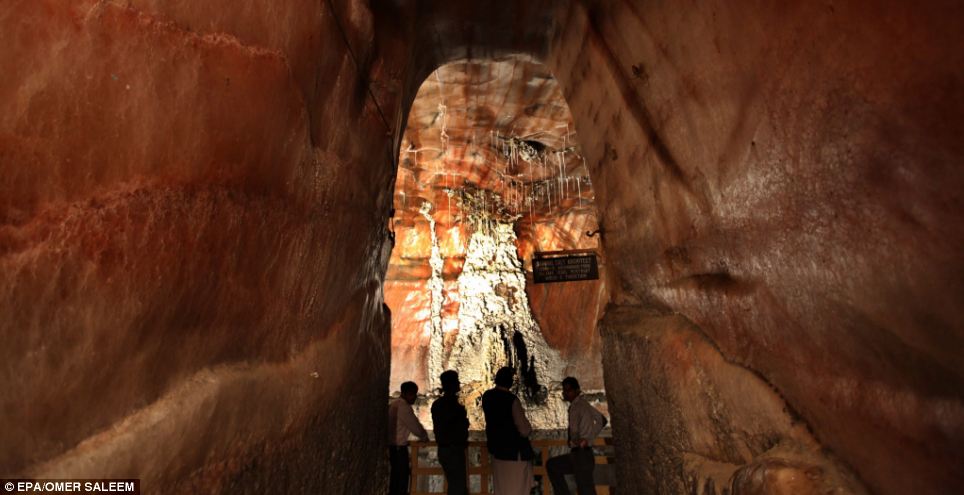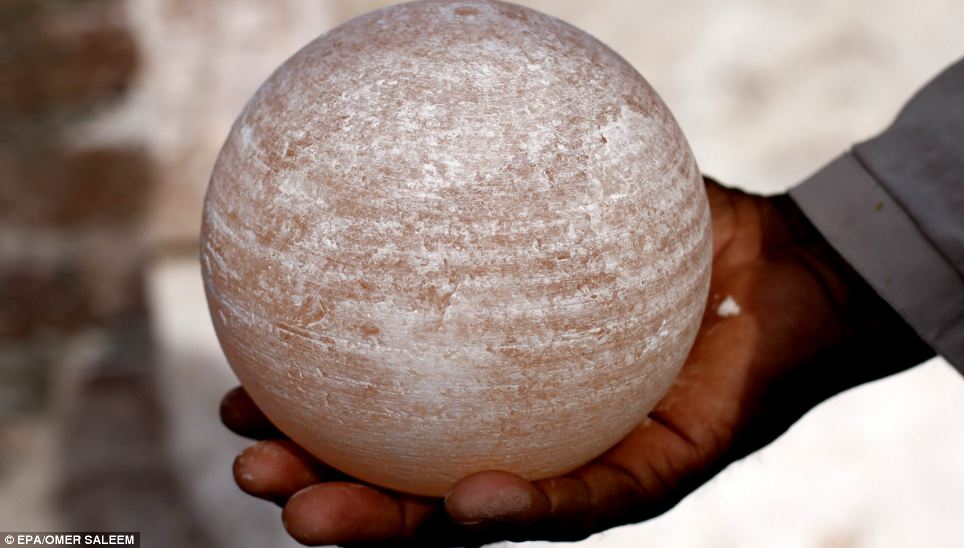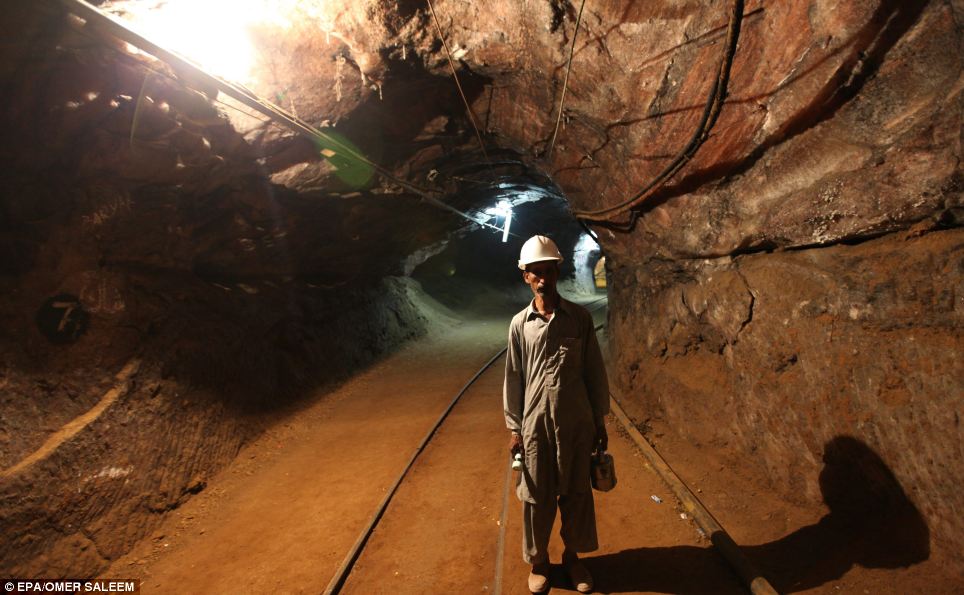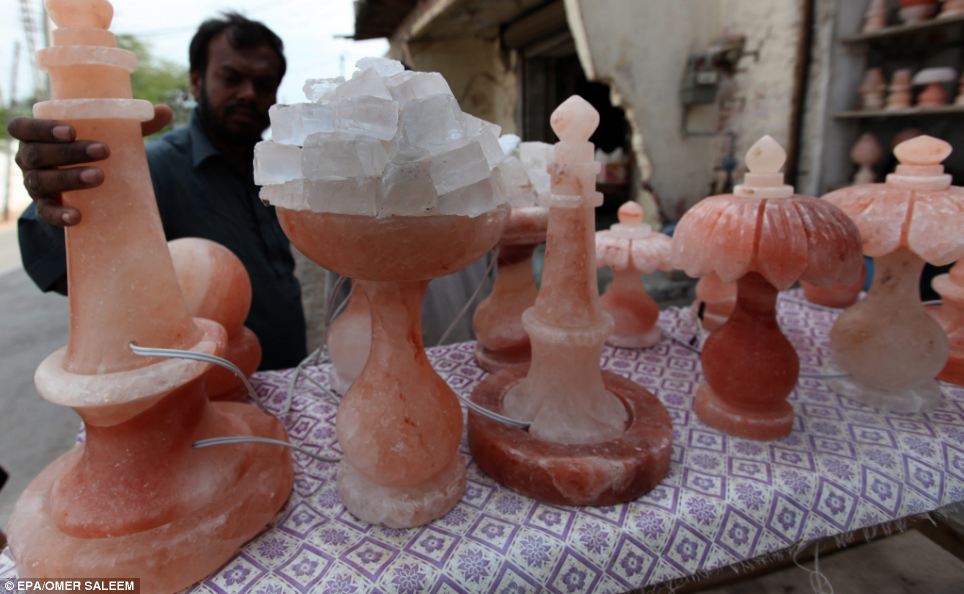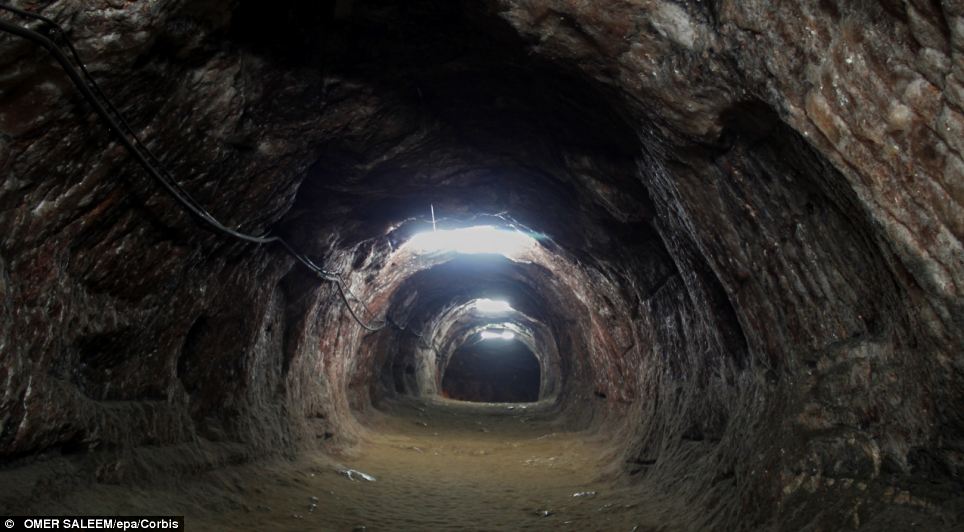Maarkhoor
ELITE MEMBER

- Joined
- Aug 24, 2015
- Messages
- 17,051
- Reaction score
- 36
- Country
- Location
Pakistan’s 10 Most Beautiful Places You Should See
For centuries before obtaining independence, Pakistan was governed by different rulers, from the nature-loving Mughal Emperors to the British colonialists. Such a complex and fascinating history has left behind numerous military and religious landmarks scattered across the country, where stunning mosques, forts, mausoleums and national monuments stand to this day. Discover some of Pakistan’s best attractions and sights with our guide to the country’s most striking examples of historic architecture.

Shalimar Gardens | © Farrukh/Flickr
Shalimar
Gardens
Completed in
1641, the Shalimar Gardens were the possession of a noble, Pakistani family, a
governance not difficult to guess at all, considering the magnificence of this
beautiful site. The gardens are laid out over three descending, successive
terraces carrying the poetic names of Bestower of Pleasure, Bestower
of Goodness and Bestower of Life, each rising four to five meters above the
other. Despite the ravishing flowers and lush fruit trees, the flora isn’t the
best attraction of these gardens, as the misleading name might suggest. In
fact, most striking are the large pools placed in the middle of the terraces,
which receive water from hundreds of fountains (410 in total across the three
terraces). The quaint pavilions, porticoed audience halls and marble basins
found along the edges of the pools complete a peaceful, dream-like and
refreshing corner in the city of Lahore.
Shalimar
Gardens, G. T. Rd, Lahore, Pakistan

Faisal Mosque | © _rh/Flickr
Faisal
Mosque
When Turkish
architect Vedat Dalokay‘s
design was chosen for the Faisal Mosque, many raised their eyebrows. The
project differed from traditional mosque architecture, as it featured
contemporary, sleek lines and, most notably, lacked a dome. Construction work
began in 1976 and was finally completed ten years later. By then, most
criticism had crumbled in front of the imposing, captivating building that now
dominates Islamabad, Pakistan’s capital city, from its elevated position at the
foot of the Margalla Hills. The mosque is named after Faisal bin Abdul-Aziz,
the Saudi king who suggested the idea of a national Pakistani mosque, and
largely financed its construction. The 5,000-square-meter prayer hall is an
eight-sided, concrete structure, inspired by the traditional tents of Bedouins,
with a capacity for 100,000 worshippers. It’s surrounded by four 88-metre-high
minarets in perfect one-to-one ratio with the base. They were designed as the
sides of an imaginary cube, in honor of the sacred, cubic Kaaba
found at the centre of Mecca’s most important mosque.
Faisal
Mosque, Faisal Avenue, Islamabad, Pakistan
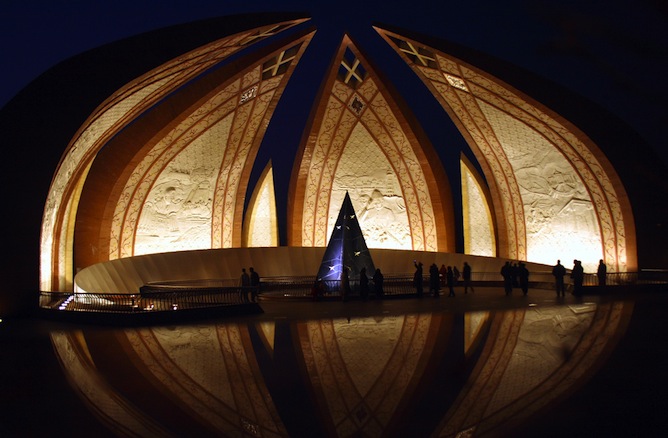
Pakistan Monument | © Muzaffar Bukhari/Flickr
Pakistan Monument
The Pakistan Monument was
inaugurated in Islamabad on 23 March 2007 as a national monument embodying the
country’s history, and is in effect rich with significant cultural references.
For its design, architect Arif Masood drew inspiration from the figure of a
blossoming flower to represent the four provinces and three territories into
which Pakistan is subdivided. The structure consists of four bigger ‘petals’
(the provinces), alternated with three smaller ones (the territories), built in
granite and decorated with murals on the inner sides. Seen from above, the
monument meaningfully recalls the five-pointed star on Pakistan’s
national flag. Below the petals, a metallic crescent is found, which
is inscribed with verses by Pakistan’s founder Muhammad Ali Jinnah and Indian
poet Muhammad Iqbal.
Shakar Parian National Park, Islamabad, Pakistan
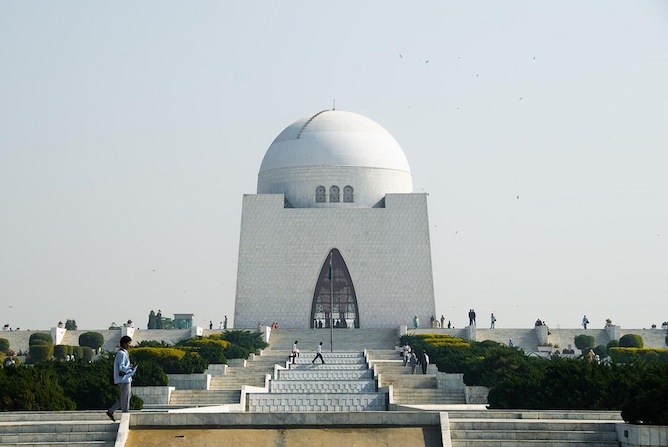
Tomb of Muhammad Ali Jinnah | © Benny Lin/Flickr
Tomb of Muhammad Ali Jinnah
(Mazar-e-Quaid)
Widely revered as the Great
Leader or Father of the Nation throughout Pakistan, Muhammad Ali
Jinnah was a pivotal figure in leading the country to independence
from the British Empire. A beautiful mausoleum in Karachi,
Pakistan’s largest city and Jinnah’s hometown, celebrates his memory and is
home to his tomb, as well as those of his sister and Pakistan’s first prime
minister. The mausoleum’s bold design impresses with its striking yet iconic
simplicity: a nearly cubic base, with an extension of 75 square meters, topped
by a large dome, both clad with splendid white marble. The sanctum can be
entered on any of the four entrances, one on every wall, and each situated under
an eye-catching Moorish arch. Jinnah’s tomb lies on an elevated platform rising
in the middle of the stunning surrounding park, with beautiful moans and a set
of 15 successive fountains that lead the eye towards the mausoleum.
Mazar-e-Quaid,
Jacob Lines, Karachi, Pakistan

Minar-e-Pakistan | © Irfan0552007/WikiCommons
Minar-e-Pakistan
On 23 March 1940, the
All-India Muslim League passed a resolution that represented the decisive step
towards the foundation of Pakistan. Twenty years later, on the site in Lahore
where that historical event had taken place, construction work began on a
commemorative monument, the Minar-e-Pakistan, which was completed eight years
later. The Minar-e-Pakistan is a 62-meter-high minaret rich in symbols standing
for the history of Pakistan. The tower is laid on an elevated base, in the
shape of a five-pointed star, which comprises of four platforms. The stones used
to build each platform are progressively more refined from the bottom up
(ranging from uncut stones to polished white marble), to signify the difficult
developments but final success of the Pakistan Movement for independence. Like
Islamabad’s Pakistan Monument, this landmark’s lower part is built in the shape
of a blossoming flower, from which the tower rises as a symbol of the country’s
birth. The Minar-e-Pakistan is situated in a large park, quite popular among Lahorites,
which is visible along with pretty much the entire city from the minaret’s top
dome.
Minar-e-Pakistan,
Circular Rd, Lahore, Pakistan
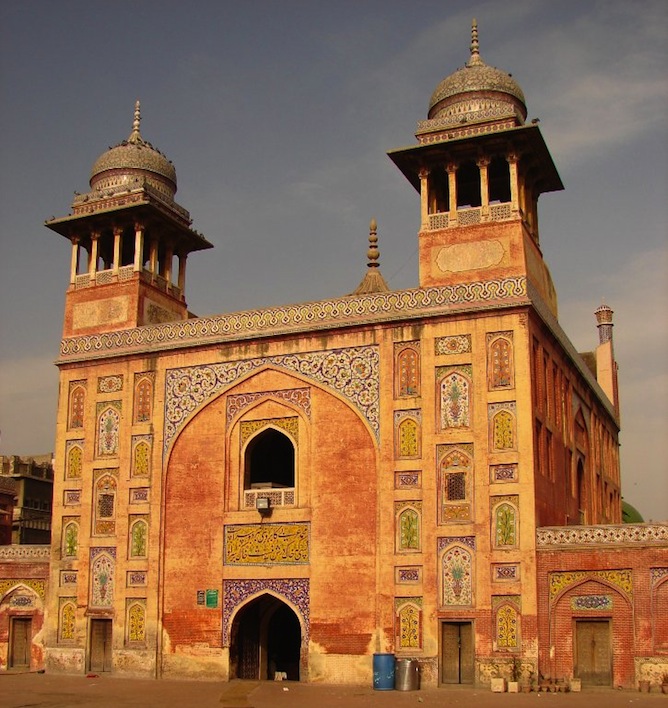
Wazir Khan Mosque | © Usman Ahmed/Flickr
Wazir Khan Mosque
The Walled City of Lahore
or Old Lahore is a historical and chaotic section of the Pakistani city
which used to be protected by walls, and entered through 13 gates. Today, the
walls are gone but most of the gates have remained. The Wazir Khan
Mosque in Old Lahore can be reached by passing through the Delhi
Gate. The magnificent mosque, with four minarets of about 33 meters each and
five turnip-shaped domes, is built entirely with small bricks and was named
after the governor who ordered its construction in 1634. One of the most
beautiful mosques in Pakistan, it is best known for its incredible mosaics made from
myriads of brightly colored glazed tiles. These are found all over the external and
internal walls, and are so meticulous and rich in details that they make Wazir Khan a
stunning piece of art, in addition to a religious site. This mosque is also
famous for having been the first to include a 22-shop bazaar in its original
planning, still today a unique feature among mosques worldwide.
Wazir Khan
Mosque, Brass Bazar, Walled City, Lahore, Pakistan
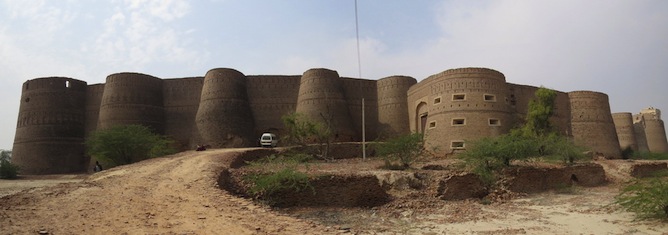
Derawar Fort | © Khalid Mir/Flickr
Derawar Fort
A visit to the Derawar Fort
requires a three to four-hour long trip with a four-wheel vehicle, but those
with a soft spot for military structures won’t regret the journey. Found in the
middle of nowhere, miles into the Cholistan
Desert, the awe-inspiring Derawar Fort, built in 1733, dominates the
landscape, and is characterized by a unique ensemble of 40 massive, largely
intact bastions set all along the four walls. The ramparts rise about 30 meters
above the ground, and the fort has an impressive circumference of 1.5
kilometers. Visiting the fort’s interiors requires a special permission by
local authorities, and may not be worth the trouble of going through such
process: the imposing bastions are in fact the real attraction of this striking
landmark. While on site, however, visitors might also enjoy taking a look at
the nearby mosque, an almost exact replica of the Moti Mosque right outside
Delhi’s Red Fort.
Derawar Fort,
Derawar Fort Rd, Derawar Fort, Pakistan
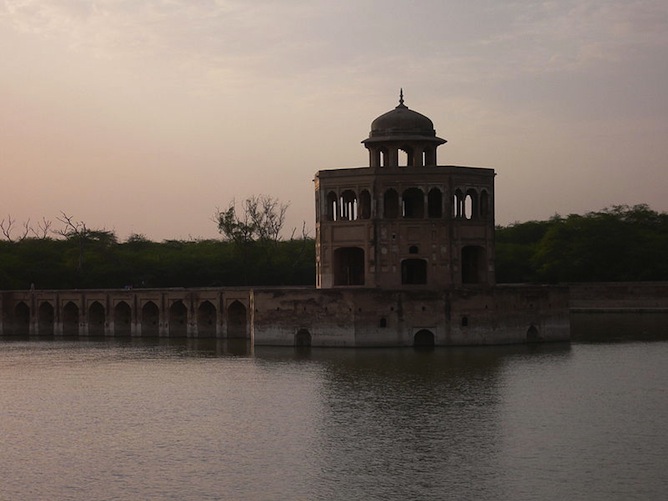
Hiran Minar | © QadeemMusalman/Wikicommons
Hiran Minar
When a beloved pet dies, what
people usually do to keep its memory alive is preserve pictures and maybe a few
objects to remember it by. In 1606, when Mughal Emperor Jahangir’s pet deer
died, he had a minaret built to commemorate it. The Hiran Minar (Deer Tower) is
situated in the Pakistani city of Sheikhupura, which briefly
enjoyed the status of a popular hunting ground in the early 1600s. One day,
during a hunting session, Jahangir spotted a deer he wanted to kill, but
mistakingly hit his favorite hunting deer, Mansraji, instead. Feeling guilty,
the Emperor ordered the construction of the minaret. Almost thirty years later,
the mausoleum was enriched with an adjoining, large water tank; in the middle
of the tank lies a picturesque octagonal pavilion, connected to the mainland
through an elevated walkway. A rare celebration of the love of man for animals,
the Hiran Minar is an attractive sight that certainly deserves to be seen.
Hiran Minar,
Sheikhupura, Pakistan
For centuries before obtaining independence, Pakistan was governed by different rulers, from the nature-loving Mughal Emperors to the British colonialists. Such a complex and fascinating history has left behind numerous military and religious landmarks scattered across the country, where stunning mosques, forts, mausoleums and national monuments stand to this day. Discover some of Pakistan’s best attractions and sights with our guide to the country’s most striking examples of historic architecture.

Shalimar Gardens | © Farrukh/Flickr
Shalimar
Gardens
Completed in
1641, the Shalimar Gardens were the possession of a noble, Pakistani family, a
governance not difficult to guess at all, considering the magnificence of this
beautiful site. The gardens are laid out over three descending, successive
terraces carrying the poetic names of Bestower of Pleasure, Bestower
of Goodness and Bestower of Life, each rising four to five meters above the
other. Despite the ravishing flowers and lush fruit trees, the flora isn’t the
best attraction of these gardens, as the misleading name might suggest. In
fact, most striking are the large pools placed in the middle of the terraces,
which receive water from hundreds of fountains (410 in total across the three
terraces). The quaint pavilions, porticoed audience halls and marble basins
found along the edges of the pools complete a peaceful, dream-like and
refreshing corner in the city of Lahore.
Shalimar
Gardens, G. T. Rd, Lahore, Pakistan

Faisal Mosque | © _rh/Flickr
Faisal
Mosque
When Turkish
architect Vedat Dalokay‘s
design was chosen for the Faisal Mosque, many raised their eyebrows. The
project differed from traditional mosque architecture, as it featured
contemporary, sleek lines and, most notably, lacked a dome. Construction work
began in 1976 and was finally completed ten years later. By then, most
criticism had crumbled in front of the imposing, captivating building that now
dominates Islamabad, Pakistan’s capital city, from its elevated position at the
foot of the Margalla Hills. The mosque is named after Faisal bin Abdul-Aziz,
the Saudi king who suggested the idea of a national Pakistani mosque, and
largely financed its construction. The 5,000-square-meter prayer hall is an
eight-sided, concrete structure, inspired by the traditional tents of Bedouins,
with a capacity for 100,000 worshippers. It’s surrounded by four 88-metre-high
minarets in perfect one-to-one ratio with the base. They were designed as the
sides of an imaginary cube, in honor of the sacred, cubic Kaaba
found at the centre of Mecca’s most important mosque.
Faisal
Mosque, Faisal Avenue, Islamabad, Pakistan

Pakistan Monument | © Muzaffar Bukhari/Flickr
Pakistan Monument
The Pakistan Monument was
inaugurated in Islamabad on 23 March 2007 as a national monument embodying the
country’s history, and is in effect rich with significant cultural references.
For its design, architect Arif Masood drew inspiration from the figure of a
blossoming flower to represent the four provinces and three territories into
which Pakistan is subdivided. The structure consists of four bigger ‘petals’
(the provinces), alternated with three smaller ones (the territories), built in
granite and decorated with murals on the inner sides. Seen from above, the
monument meaningfully recalls the five-pointed star on Pakistan’s
national flag. Below the petals, a metallic crescent is found, which
is inscribed with verses by Pakistan’s founder Muhammad Ali Jinnah and Indian
poet Muhammad Iqbal.
Shakar Parian National Park, Islamabad, Pakistan

Tomb of Muhammad Ali Jinnah | © Benny Lin/Flickr
Tomb of Muhammad Ali Jinnah
(Mazar-e-Quaid)
Widely revered as the Great
Leader or Father of the Nation throughout Pakistan, Muhammad Ali
Jinnah was a pivotal figure in leading the country to independence
from the British Empire. A beautiful mausoleum in Karachi,
Pakistan’s largest city and Jinnah’s hometown, celebrates his memory and is
home to his tomb, as well as those of his sister and Pakistan’s first prime
minister. The mausoleum’s bold design impresses with its striking yet iconic
simplicity: a nearly cubic base, with an extension of 75 square meters, topped
by a large dome, both clad with splendid white marble. The sanctum can be
entered on any of the four entrances, one on every wall, and each situated under
an eye-catching Moorish arch. Jinnah’s tomb lies on an elevated platform rising
in the middle of the stunning surrounding park, with beautiful moans and a set
of 15 successive fountains that lead the eye towards the mausoleum.
Mazar-e-Quaid,
Jacob Lines, Karachi, Pakistan

Minar-e-Pakistan | © Irfan0552007/WikiCommons
Minar-e-Pakistan
On 23 March 1940, the
All-India Muslim League passed a resolution that represented the decisive step
towards the foundation of Pakistan. Twenty years later, on the site in Lahore
where that historical event had taken place, construction work began on a
commemorative monument, the Minar-e-Pakistan, which was completed eight years
later. The Minar-e-Pakistan is a 62-meter-high minaret rich in symbols standing
for the history of Pakistan. The tower is laid on an elevated base, in the
shape of a five-pointed star, which comprises of four platforms. The stones used
to build each platform are progressively more refined from the bottom up
(ranging from uncut stones to polished white marble), to signify the difficult
developments but final success of the Pakistan Movement for independence. Like
Islamabad’s Pakistan Monument, this landmark’s lower part is built in the shape
of a blossoming flower, from which the tower rises as a symbol of the country’s
birth. The Minar-e-Pakistan is situated in a large park, quite popular among Lahorites,
which is visible along with pretty much the entire city from the minaret’s top
dome.
Minar-e-Pakistan,
Circular Rd, Lahore, Pakistan

Wazir Khan Mosque | © Usman Ahmed/Flickr
Wazir Khan Mosque
The Walled City of Lahore
or Old Lahore is a historical and chaotic section of the Pakistani city
which used to be protected by walls, and entered through 13 gates. Today, the
walls are gone but most of the gates have remained. The Wazir Khan
Mosque in Old Lahore can be reached by passing through the Delhi
Gate. The magnificent mosque, with four minarets of about 33 meters each and
five turnip-shaped domes, is built entirely with small bricks and was named
after the governor who ordered its construction in 1634. One of the most
beautiful mosques in Pakistan, it is best known for its incredible mosaics made from
myriads of brightly colored glazed tiles. These are found all over the external and
internal walls, and are so meticulous and rich in details that they make Wazir Khan a
stunning piece of art, in addition to a religious site. This mosque is also
famous for having been the first to include a 22-shop bazaar in its original
planning, still today a unique feature among mosques worldwide.
Wazir Khan
Mosque, Brass Bazar, Walled City, Lahore, Pakistan

Derawar Fort | © Khalid Mir/Flickr
Derawar Fort
A visit to the Derawar Fort
requires a three to four-hour long trip with a four-wheel vehicle, but those
with a soft spot for military structures won’t regret the journey. Found in the
middle of nowhere, miles into the Cholistan
Desert, the awe-inspiring Derawar Fort, built in 1733, dominates the
landscape, and is characterized by a unique ensemble of 40 massive, largely
intact bastions set all along the four walls. The ramparts rise about 30 meters
above the ground, and the fort has an impressive circumference of 1.5
kilometers. Visiting the fort’s interiors requires a special permission by
local authorities, and may not be worth the trouble of going through such
process: the imposing bastions are in fact the real attraction of this striking
landmark. While on site, however, visitors might also enjoy taking a look at
the nearby mosque, an almost exact replica of the Moti Mosque right outside
Delhi’s Red Fort.
Derawar Fort,
Derawar Fort Rd, Derawar Fort, Pakistan

Hiran Minar | © QadeemMusalman/Wikicommons
Hiran Minar
When a beloved pet dies, what
people usually do to keep its memory alive is preserve pictures and maybe a few
objects to remember it by. In 1606, when Mughal Emperor Jahangir’s pet deer
died, he had a minaret built to commemorate it. The Hiran Minar (Deer Tower) is
situated in the Pakistani city of Sheikhupura, which briefly
enjoyed the status of a popular hunting ground in the early 1600s. One day,
during a hunting session, Jahangir spotted a deer he wanted to kill, but
mistakingly hit his favorite hunting deer, Mansraji, instead. Feeling guilty,
the Emperor ordered the construction of the minaret. Almost thirty years later,
the mausoleum was enriched with an adjoining, large water tank; in the middle
of the tank lies a picturesque octagonal pavilion, connected to the mainland
through an elevated walkway. A rare celebration of the love of man for animals,
the Hiran Minar is an attractive sight that certainly deserves to be seen.
Hiran Minar,
Sheikhupura, Pakistan

